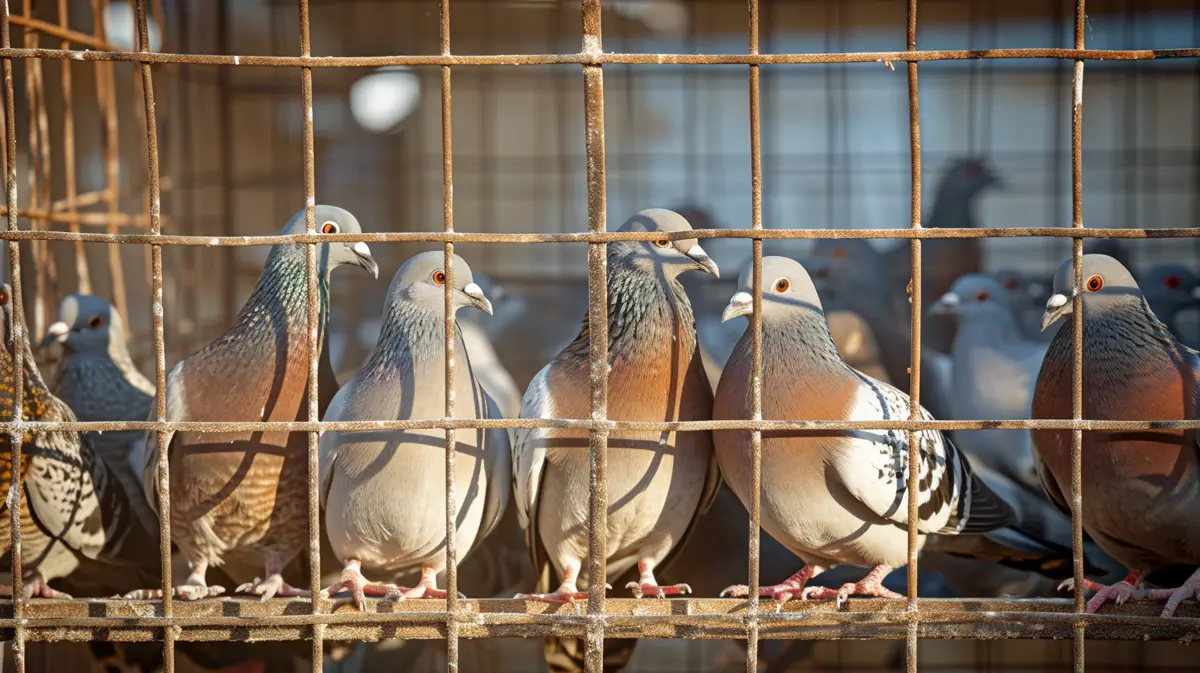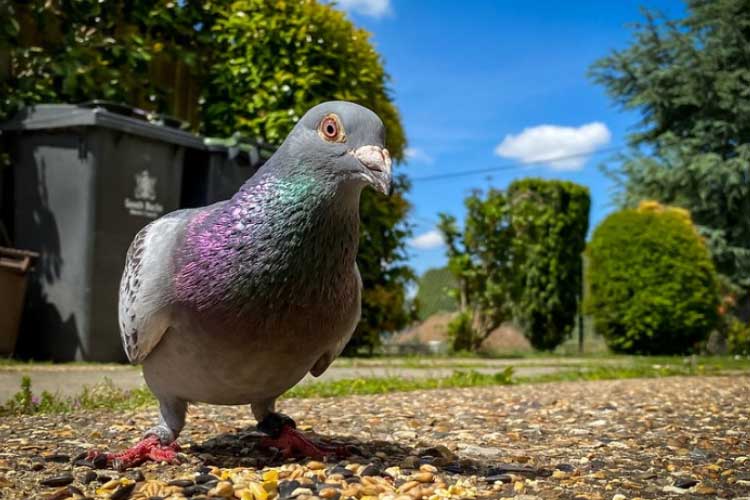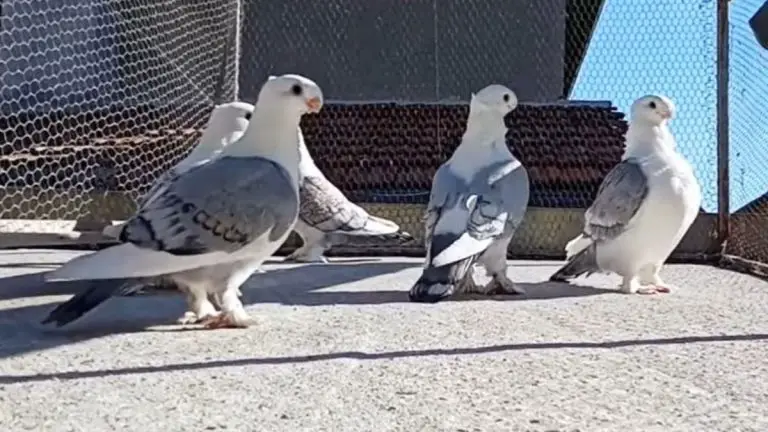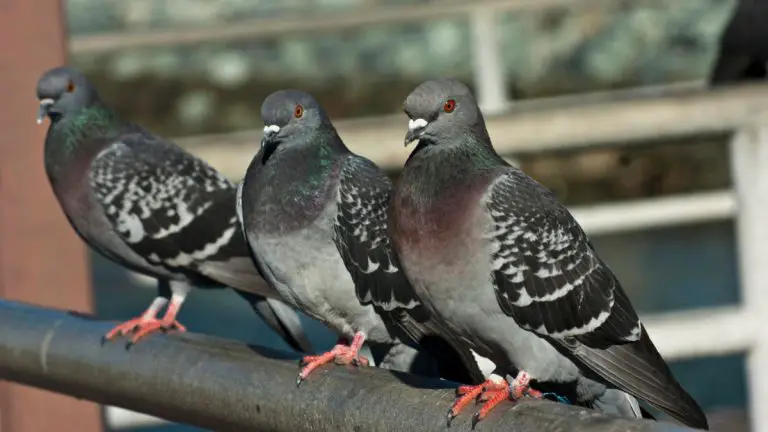Stress Management in Pigeons: Urban Adaptation and Coping Mechanisms
Have you ever wondered how pigeons cope with the stress of city life? As an avid bird enthusiast, I’ve always been fascinated by these resilient creatures and their ability to adapt to urban environments. In this article, I’ll delve into the world of stress management in pigeons, exploring the strategies they employ to navigate the challenges of their bustling surroundings. From finding sanctuary in hidden nooks to utilizing social connections, these feathered city dwellers have some surprising tricks up their wings. So, join me as we uncover the secrets of stress management in pigeons and gain a new appreciation for these remarkable urban survivors.
The Stress of City Life for Pigeons
Living in a bustling city can be tough for any creature, and pigeons are no exception. As these resilient urban dwellers navigate their way through the concrete jungle, they encounter various stressors. Let’s explore the unique challenges that city life poses for pigeons.
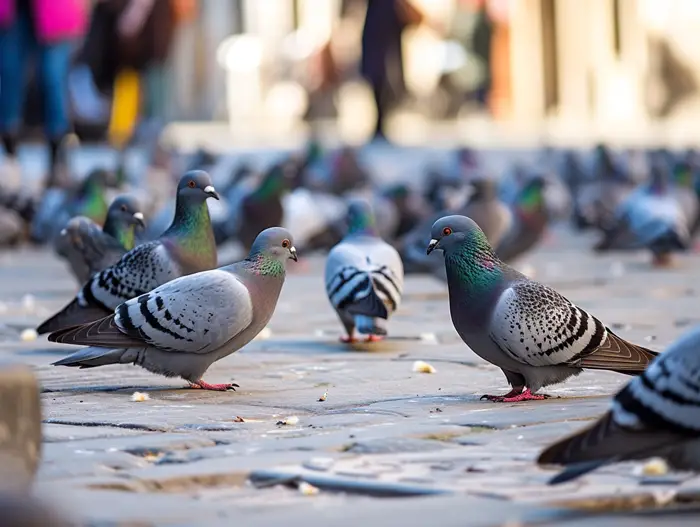
1. Noise pollution: The constant hustle and bustle of city streets can be overwhelming for pigeons. The blaring horns, screeching sirens, and loud conversations create a cacophony they must contend with every day.
2. Lack of green spaces: In a concrete-dominated environment, finding a peaceful green space can be a struggle for pigeons. These birds thrive in natural habitats with abundant trees and open areas, but in the city, such spaces can be few and far between. They must adapt and find whatever nooks and crannies they can for a moment of respite.
3. Predators: City life brings its fair share of predators, posing a constant threat to pigeons. From feral cats to larger birds of prey, these urban dwellers must always be on high alert to ensure their safety.
4. Food scarcity: While pigeons are known for their adaptability when it comes to food, the city landscape can present unique challenges. With limited access to their natural diet, pigeons must rely on scavenging for scraps or depending on the generosity of humans.
5. Pollution: The polluted air in cities can take a toll on the respiratory systems of pigeons, making it increasingly difficult for them to breathe and stay healthy.
It’s important to appreciate the resilience of these city-dwelling birds as they navigate the stressors of urban life. Despite the challenges they face, pigeons have developed fascinating strategies to cope with the demands of their environment. In the next section, we’ll explore how pigeons find sanctuary in hidden nooks and utilize social connections to manage the stress of city life without a conclusion paragraph or sentence.
Understanding Pigeon Behavior and Adaptation
Pigeons, also known as rock doves, are fascinating creatures that have adapted remarkably well to their urban environment. In this section, I will delve into their behavior and discuss some of the ways in which they have adapted to thrive in cities.

Highly Sociable Creatures
Pigeons are highly social birds and form large flocks, often roosting in urban areas such as rooftops, ledges, and bridges. This social behavior provides them with safety in numbers, allowing them to collectively lookout for predators and share information about food sources. Their ability to communicate through various vocalizations and visual signals further strengthens their social bonds.
Navigational Skills
One of the most impressive features of pigeons is their navigational ability. They possess a remarkable sense of direction and are known for their homing instincts. Pigeons can quickly and accurately return to their nesting sites, even when transported long distances away. This remarkable skill has been harnessed by humans throughout history, from carrying messages during wars to participating in pigeon racing competitions.
Adapting to Urban Structures
City life poses unique challenges for pigeons, but they have managed to adapt and make the most of their surroundings. Pigeons often build nests in the nooks and crannies of buildings, utilizing the architecture to create safe and sheltered spaces for their young. They have even been observed nesting on window ledges and air conditioning units.
Dietary Adaptations
Food scarcity can be a major challenge for pigeons in urban areas. However, they have adapted their diet to include a wide range of food sources. While their natural diet consists of seeds and grains, they have also become opportunistic scavengers, feeding on scraps of food discarded by humans. This flexibility in their diet helps them survive in environments where food resources may be limited.
Resilience in the Face of Stressors
Despite the noise pollution, lack of green spaces, burgeoning predators, and pollution that come with city living, pigeons have shown remarkable resilience. They have become accustomed to the hustle and bustle of urban life, learning to navigate busy streets and structures. Their ability to adapt to such challenging conditions showcases the innate resourcefulness of these city-dwelling birds.
Sanctuary in Hidden Nooks: Pigeon Safe Spaces
When it comes to stress management in pigeons, creating safe spaces for these birds is crucial. Just like humans, pigeons also need a sanctuary where they can feel secure and find solace from the bustling city environment. In this section, I’ll delve into the concept of hidden nooks as pigeon safe spaces and their importance in stress management.

Creating Safe Havens
Pigeons are highly adaptable creatures and have a remarkable ability to find refuge in unexpected places. The concrete jungles of urban environments may lack the natural habitats they once occupied, but these resourceful birds have learned to make the most of their surroundings. They seek out hidden nooks and crannies to create their own safe havens.
The Role of Hidden Nooks
Hidden nooks provide pigeons with a sense of security and protection from predators. These secluded spots offer shelter from the elements, including extreme weather conditions. They also serve as resting places where pigeons can find momentary respite from the constant noise and chaos of city life.
Common Hiding Spots
You may be surprised to discover the various hiding spots pigeons have adapted to as their safe spaces. Some of the common places where they seek refuge include:
- Rooftop corners and ledges
- Building eaves and awnings
- Window sills and recessed balconies
- Chimney tops and tall structures
- Under bridges and overpasses
These hidden nooks provide pigeons with a sense of security and privacy, allowing them to recuperate from the stresses of urban living.
The Benefits of Pigeon Safe Spaces
Creating pigeon safe spaces has numerous benefits. These include:
- Reduced Exposure to Predators: By nesting in hidden nooks, pigeons minimize their exposure to potential predators, increasing their chances of survival.
- Improved Emotional Well-being: Providing safe spaces helps pigeons alleviate stress and anxiety caused by the constant hustle and bustle of city life.
- Enhanced Reproductive Success: Safe spaces offer a conducive environment for pigeons to mate, nest, and raise their young, contributing to higher reproductive success rates.
By recognizing the importance of hidden nooks as pigeon safe spaces, we can play a role in promoting their well-being and ensuring their coexistence in urban environments.
Creating safe spaces for pigeons is a critical aspect of stress management in these urban-dwelling birds.
Building Social Connections: Pigeon Support Systems
As I mentioned earlier, pigeons are highly adaptable creatures that have successfully made urban environments their home. However, living in a bustling city can be stressful, even for pigeons. Just like humans, pigeons benefit from having social connections and support systems. In this section, I will discuss the importance of building social connections for pigeons’ stress management.
Pigeons are social birds that exhibit complex social behaviors. They form strong bonds with their mates and establish hierarchies within their social groups. These social connections play a significant role in pigeons’ well-being, as they provide emotional support and a sense of belonging. By nurturing their social relationships, pigeons can effectively manage stress and thrive in urban environments.
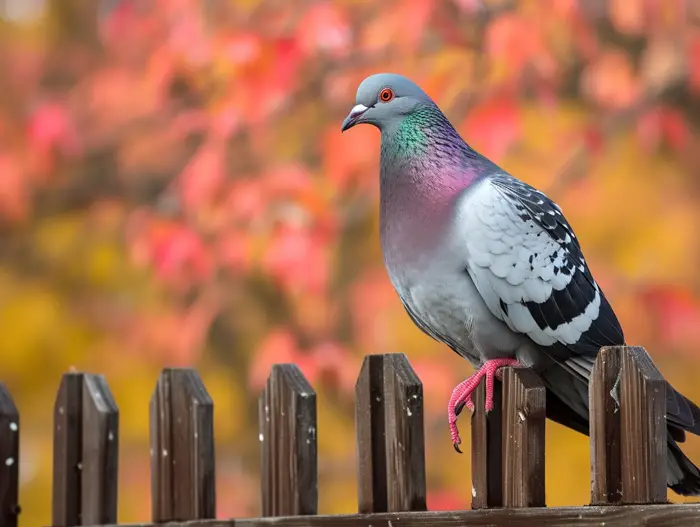
One way pigeons build social connections is through flocking behavior. Flocking refers to the gathering of pigeons in large groups. Flocks provide pigeons with a sense of community and safety in numbers. When pigeons flock, they often engage in activities such as preening each other’s feathers, which helps to strengthen their social bonds. Flocking also allows pigeons to share resources, such as food and information about safe roosting spots.
In addition to flocking behavior, pigeons also rely on vocalizations to communicate with one another. Pigeons use cooing sounds, rhythmic calls, and other vocalizations to express their emotions, establish territory boundaries, and attract potential mates. By vocalizing, pigeons can signal their presence to other pigeons and strengthen their social connections.
Moreover, pigeons engage in ritualized behaviors, such as bowing and head-bobbing, to establish their social status within their groups. These behaviors convey important information about dominance and submission, helping pigeons navigate their social dynamics and maintain harmonious relationships.
Understanding the significance of social connections for pigeons allows us to support their stress management efforts. By providing spaces that encourage flocking behavior, such as parks and plazas with suitable perching and feeding areas, we can create opportunities for pigeons to build and maintain their social networks. Additionally, we can contribute to their well-being by minimizing disruptions to their vocalizations and by preserving their natural habitats.
By recognizing the importance of building social connections for pigeons, we can contribute to their stress management and overall welfare in urban environments. Fostering an environment that supports pigeon support systems not only benefits these birds but enhances our coexistence with them as well.
Surprising Tricks up Their Wings: Pigeon Coping Mechanisms

When it comes to dealing with stress, pigeons have some surprising tricks up their wings. Let’s explore the coping mechanisms that these remarkable birds use to manage the challenges of urban environments.
- Navigation Skills: Pigeons are renowned for their exceptional navigational abilities. They have a built-in “GPS” system in their brains called magnetoreception, which enables them to sense the Earth’s magnetic fields. This helps them find their way and navigate through complex urban landscapes, reducing stress caused by disorientation.
- Adaptability: Pigeons are incredibly adaptable creatures. They can thrive in various urban environments, including skyscrapers, parks, and even subway systems. Their ability to adapt to changing conditions allows them to find food, water, and shelter, minimizing the impacts of stress.
- Strong Social Connections: Pigeons are highly social birds that rely on their social connections for support. They form strong bonds with their mates and establish hierarchies within their social groups. Flocking behavior, vocalizations, and ritualized behaviors are all ways in which pigeons build and maintain their social connections. These deep social bonds provide comfort and companionship, reducing stress levels.
- Keen Observational Skills: Pigeons have excellent observational skills. They are constantly aware of their surroundings and use visual cues to assess potential threats and opportunities. This heightened awareness helps them avoid danger and adapt to their environment, ultimately reducing stress.
- Natural Preening Rituals: Pigeons have a unique self-care routine known as preening. They use their beaks to clean and condition their feathers, removing dirt, parasites, and excess oil. Preening not only keeps their plumage healthy but also acts as a form of relaxation and self-soothing. This grooming behavior helps pigeons alleviate stress and maintain their physical well-being.
By understanding these fascinating coping mechanisms, we can appreciate the resilience of pigeons in urban environments. Incorporating this knowledge into our coexistence efforts will promote their well-being and enhance our understanding of these remarkable birds.
Conclusion
In this article, we have explored the fascinating world of stress management in pigeons. We have learned that creating safe spaces for these birds is crucial for their well-being in urban environments. However, pigeons have also shown us their remarkable ability to adapt and cope with the challenges they face.
Their exceptional navigational skills, adaptability to changing conditions, strong social connections, keen observational abilities, and natural preening rituals all contribute to their ability to manage stress. These coping mechanisms highlight the resilience and resourcefulness of pigeons in urban settings.
By understanding and appreciating these unique qualities, we can improve our coexistence with pigeons and create a more harmonious environment. Whether it’s providing safe roosting areas or implementing measures to reduce stressors, we can make a positive impact on the lives of these remarkable birds.
Stress management in pigeons is a complex and fascinating topic. By applying our knowledge and taking action, we can ensure that pigeons thrive in our urban landscapes. Let’s continue to learn, adapt, and create a better future for both pigeons and humans alike.
